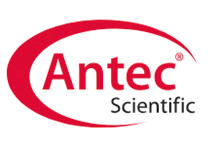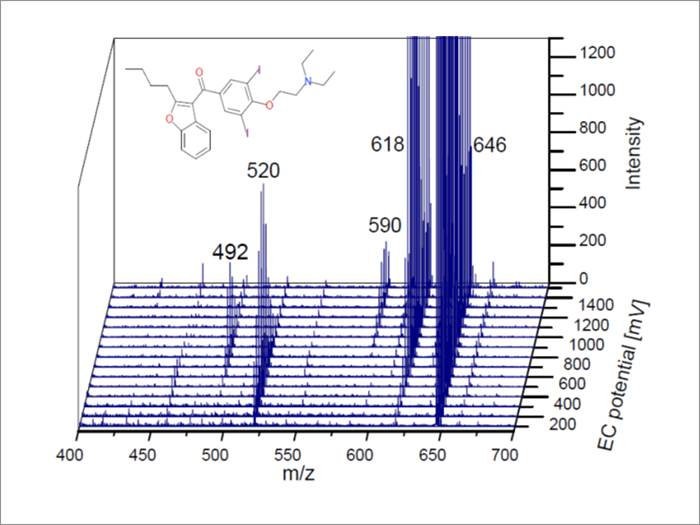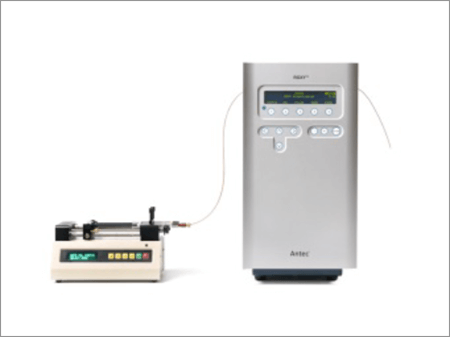So far, most drug metabolism studies have been based on traditional in vitro techniques initially using liver microsomes, and at later stages in vivo techniques using rodents and finally human.
Both techniques are time-consuming and can be very costly. In addition, they require isolation from the biological matrix (i.e., microsomes, urine, plasma) with the risk of sample loss due to adsorption and/or binding to the cell membrane or constituents. Furthermore, conjugation reactions (Phase II reactions), such as adduct formation with glutathione, are difficult to perform in a controlled manner.
Recently, it has been shown that drug metabolites are formed instantaneously in an electrochemical cell, thereby mimicking the enzymatic Cytochrome P450 reactions that usually take place in the liver (Phase I reactions). By on-line coupling of an electrochemical reactor cell with MS (EC-MS) a drug compound can be easily oxidized in a precise and controlled manner within a few minutes, mimicking/predicting the oxidative drug metabolism to become a true biomimetic tool for enzymatic REDOX reactions.


Why EC-MS in drug/xenobiotic metabolism?
Beside substantial cost and time savings, other advantages of an in-electro approach to metabolism studies result from the absence of any biological matrices. Only clean solvents such as MeOH, ACN or water with formic acid or volatile buffers are used, making the isolation steps obsolete and direct coupling with MS for identification possible.
In addition, the on-line coupling offers the possibility for the measurement of reactive and/or short-lived metabolites – sometimes very difficult, if not impossible, to perform with in vitro or in vivo techniques.
In Figure 1 a typical oxidative “fingerprint” of the drug compound amiodarone (antiarrhythmic agent) is shown. In this MS voltammogram, the signal intensity is plotted versus the m/z and the applied voltage of the electrochemical cell. Simply by increasing the voltage from 200 to 1600 mV all major metabolites could be generated in less than 15 minutes.
Conclusions
Both Phase I (i.e., oxidative metabolism), and Phase II (i.e., conjugation/adduct formation with GSH or proteins) can be performed easily using the Antec Scientific ROXY™ EC system.
With over 100 peer publications from academia and industry available, “in electro” using the ROXY EC system is a truly comprehensive EC-MS technique to in vivo and in vitro drug metabolism.
For more information see www.AntecScientific.com






